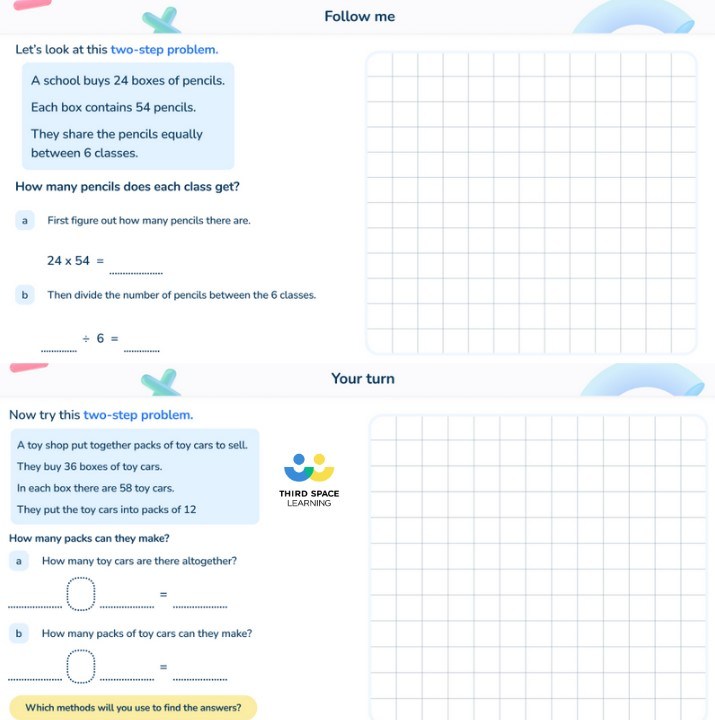Summative Assessment And Student Success: A Comprehensive Review
Are you looking to design summative assessments that accurately measure how much your students have learned and how well they have mastered the content and skills? It may seem like creating a test is a straightforward task – just jot down some questions and select the answers. But if you aspire to create assessments that genuinely reflect your learners’ abilities and enhance their academic achievements, you need to adopt a more considerate approach.
In this article, we’ll delve into the benefits and limitations of summative assessments on student achievement and provide recommendations for teachers to improve the effectiveness of summative assessments for their learners.
What is summative assessment?
An evaluation of students’ current understanding and achievement. It allows teachers to track learners’ progress over a period of time. These assessments are typically used to assign grades and determine how well students have mastered the learning objectives at a particular point in time. The findings can be utilized to determine their academic growth and make informed decisions about how to support each student in succeeding.
Examples of summative assessment
They can take many forms, including standarized tests, exams, projects, or essays, and are often scored to provide a quantifiable measure of students’ performance.
Some examples include:
- Portfolios of work created by students to include samples of their work and projects from different subjects, showcasing their growth and learning over time.
- A final project following a period of group work.
- Midterm exams or classroom assessments at the end of a unit of study.
- Performance assessments that showcase students’ development of new skills.
- Standardized tests that are typically administered at the state or national level and help assess students’ overall proficiency in these subjects.

Formative vs summative assessments
The difference between formative assessment and summative assessment is their purpose, design, frequency, and outcomes. While summative assessment is an assessment of learning, formative assessment is an assessment for learning. Formative and summative assessments are the two types of assessment that are most prevalent in education literature. The table below shows their main characteristics:
| Formative Assessment | Summative Assessment | |
| Purpose | Progress monitoring to provide feedback on students’ learning To identify areas where students might be struggling and to offer timely interventions to improve their understanding | To evaluate students’ learning outcomes and achievement at the end of a specific instructional period To determine the overall level of understanding and competence a student has achieved |
| Frequency | Conducted throughout the learning process, at regular intervals They can be ongoing and are often used to inform instructional decisions | End of a unit, semester, course, or year |
| Outcome | Feedback and specific guidance for improvement Identifying areas of weakness and adapting instruction Monitoring learning progress and providing timely interventions | Evaluating overall achievement and learning outcomes Assigning grades or scores to summarize performance Assessing program effectiveness and accountability |
| Examples | Quizzes, in-class discussions, homework assignments, projects, classroom observations | Final exams, standardized tests, end-of-term projects, state assessments |
Benefits of summative assessment practices
The benefits of summative assessments may not be as apparent as those of formative assessment, as they are often less immediate and direct than the advantages gained from ongoing assessment strategies that promote learning.
But summative assessments bring many benefits that enhance teaching and learning.
Tracking student progress
Summative assessments offer assessment data that is typically used to track student progress over time. This data indicates whether students are making the expected level of progress based on their age and abilities.
Accountability
The results of summative assessments provide an objective measure of accountability for teachers and students.
Summative assessments provide high-stake conditions for students to showcase their capabilities to themselves and others. These assessments motivate students to prepare and revise more thoroughly than they might for other types of evaluations.
Teachers can use students’ end-of-year or external assessment results in their appraisal meetings to evaluate their teaching approaches. Additionally, students can be held accountable if their results indicate a decrease in effort or underperformance in one or more subjects.
Motivating students
However, lower-ability students and those with exam anxiety may be less motivated by summative assessments, which can lead to a decrease in their effort and motivation as the assessment date approaches.
Preparation for external exams
End-of-year state assessments are external exams that act as summative assessments at the end of a school year. High stakes classroom assessments, such as midterm exams, offer valuable exam practice for time management, meeting assessment objectives, and managing exam anxiety.
Retrieving information from long-term memory during summative assessments strengthens memory for that information and related concepts, which can be beneficial for students during external exams.
Standardization
Summative assessments can provide schools and education systems with objective data to create standardized scores for each learner. This enables individuals and small cohorts to be compared to other students and larger cohorts.
Standardization is often used to determine the grade boundaries in external exams, which are then used by universities to set their entry requirements.
How can summative assessment impact student achievement?
The manner in which summative assessment is carried out can have a considerable impact on the academic progress of students.
Summative assessment helps:
- track student knowledge and progress and identify underachievement, allowing for interventions to be put in place.
- reveal issues with exam technique, which may not be identified through formative assessments.
- hold students and teachers accountable and increase motivation to improve results.
- prepare students for external exams, improving long-term memory retrieval and adjusting revision and exam strategies accordingly.
In all cases above, increased achievement is defined as achieving a higher result in a future summative assessment.
This may not be a reliable or valid measure of achievement, but until education institutions move away from standardized testing and entry requirements that depend on the results of summative assessments, it is an important measure to consider.
Limitations of summative assessment
Summative assessments are widely used in education to measure student achievement, but they also have limitations every teacher should be aware of:
Provides a limited snapshot of student achievement
Summative assessment is limited in that it provides a snapshot of student achievement at one point in time and uses a limited range of assessment strategies.
Comparing students based on summative grades might be unfair
Using summative grades to compare students to each other or to gain entry into a high school or university, seems unfair when final grades are so dependent on factors outside of students’ control.
Summative assessments emphasize memorization
Summative assessments often require students to memorize material, which is becoming an increasingly redundant skill given how readily information is available online.
Time spent memorizing material ahead of a summative assessment could be better spent deepening students’ understanding or improving their ability to critically interact with new material.
Summative assessment tips for teachers
As a teacher, designing and administering effective summative assessments can be challenging. Here are some tips to help you create successful summative assessments for your students.
1. Design a summative assessment based on its purpose
Consider the purpose of the assessment and allow this to determine the most appropriate design for the summative assessment.
If the purpose of the assessment is preparation for an external exam, mimic the format, length, and question style of the external exam paper.
If the purpose of the assessment is to track progress, include questions that relate to knowledge tested on a previous assessment and questions to gain benchmark data for a future assessment.
2. Offer clear instructions throughout the assessment
Ensure the instructions throughout the assessment clearly convey what is required from the student (e.g. show each step of your calculation).
Create a mark scheme or rubric before the assessment is set so that you are clear about what is required from each question and check that the exam instructions accurately explain this to the students.
3. Ensure consistency in summative assessments from year to year
Use the same summative assessments each year so that each cohort of students can be compared to cohorts from previous years. This allows departments to evaluate their own performance and to make adjustments if a cohort’s performance differs significantly from previous years.
Utilize the benefits of retrieval practice and spacing by including a mixture of recent and past topics on each summative assessment.
4. Prepare students in advance
Prepare students for summative assessments and reduce exam anxiety by producing practice papers that match the summative assessment in terms of style and content.
Summative assessment is designed to produce a measure of achievement. It is important because it helps teachers to track their students’ progress and gives students an opportunity to demonstrate their knowledge to external organizations such as employers or universities.
An assessment that has a clear purpose and allows comparisons to be made with the results or past or future assessments.
External exams like end-of-year state assessments
End of year or end of topic exams
Benchmark or aptitude tests that measure transferable skills and academic potential
Do you have students who need extra support in math?
Give your students more opportunities to consolidate learning and practice skills through personalized math tutoring with their own dedicated online math tutor.
Each student receives differentiated instruction designed to close their individual learning gaps, and scaffolded learning ensures every student learns at the right pace. Lessons are aligned with your state’s standards and assessments, plus you’ll receive regular reports every step of the way.
Personalized one-on-one math tutoring programs are available for:
– 2nd grade tutoring
– 3rd grade tutoring
– 4th grade tutoring
– 5th grade tutoring
– 6th grade tutoring
– 7th grade tutoring
– 8th grade tutoring
Why not learn more about how it works?
The content in this article was originally written by secondary maths teacher Zoe Benjamin and has since been revised and adapted for US schools by math curriculum specialist and former elementary math teacher Katie Keeton.


![10 Exit Ticket Ideas To Use In The Classroom [Includes Exit Ticket Templates]](https://thirdspacelearning.com/wp-content/uploads/2024/02/Exit-ticket-1-180x160.jpg)

